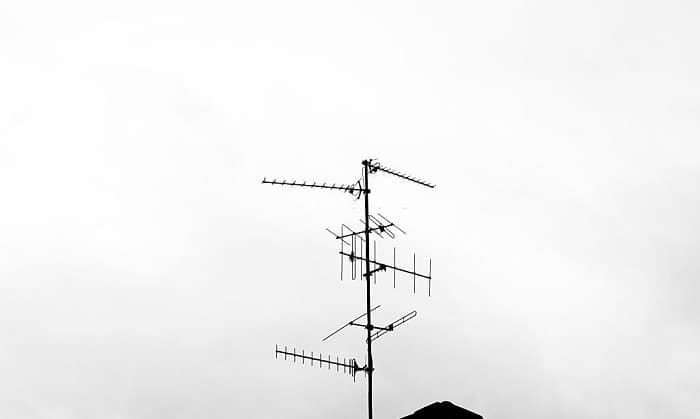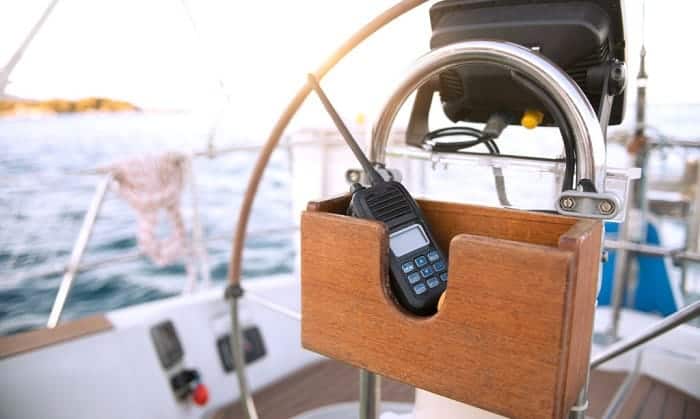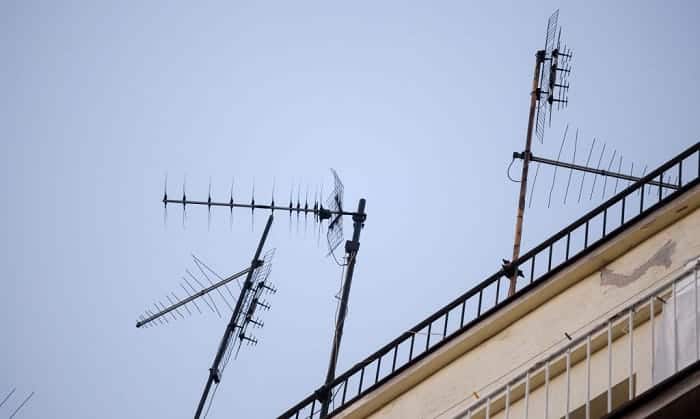VHF radios use antennas to connect to each other. Therefore, proper antenna setup is crucial for clear communication between users. Among others, one of the most vital is its height. So why is the height of a VHF radio antenna important?
The antenna height is crucial because radio frequencies travel straight in a line of sight, similar to visible light. If it is too low, obstructions like trees will negatively impact clarity. The higher the antenna, the more free space there is for the movement of the waves.
Read on to learn more about the importance of a VHF radio’s antenna height. I will also share some tips on how to ensure a clearer signal.
Table of Contents
What is a VHF Radio
VHF stands for Very High Frequency. It is one of the most common types of radios for outdoor communication. From boating to camping, having this radio is a must for safety and convenience.
Since it is a short wave, the VHF frequency range does not bend to follow the Earth’s curves and does not transmit beyond the horizon. This means that the signal’s range is impeded by large structures and hills.
If you are looking for a VHF radio, one of the best options worth considering is Uniden MHS75 2-Way Handheld Radio. From its waterproof construction to available channels, you have plenty of reasons to choose this over others.
Why is the Height of a VHF Radio Antenna Important
The communication between the two points of a VHF radio relies on high-frequency signals that propagate the ionosphere. In turn, this ionosphere works like a mirror that reflects antenna signals from high above.
A signal’s radiation at a vertical angle determines the communication distance that the antennas will generate. On the other hand, a low radiation angle is necessary for communicating over long distances. This is why it is important to adjust the right height of the antenna.
Think of an antenna as a light that travels in a straight line. A tree, house, or any obstacles between two objects block light. It will not travel to the other end, making it invisible.
The same principle applies to the VHF frequency range. If it is mounted on the ground, the signal will not reach the other end because it is prone to obstructions. The higher you position the antenna, the lesser the barriers will be.
Nonetheless, this does not mean that you should position the antenna too high. Strong winds will knock the antenna down. Consider the weather and the environment as you determine the proper height of the antenna for optimal signal travel.
Extending VHF Antenna Range
Make the most out of your VHF antenna. To ensure signal clarity and minimize obstructions, below are some of the most important things to do:
Elevate the Antenna
This is the main point that we are highlighting in this article. The height is one of the most influential of the signal clarity. It should be tall enough to be free of any obstruction when the signal travels to radiate energy from a transmission point.
Pick the Right Radio
Aside from the quality of the antenna itself, the radio is equally important. Choose a radio that can generate more output. The higher the wattage is, the clearer is the signal that it can transmit. Spend if you must if this means better performance.
Use the Right Battery
Take note of the manufacturer’s recommendations on the battery to use. The standard is 12 volts, which will produce a stronger signal. Using weaker batteries can result in a weaker signal, making the communication unclear.
Install a Repeater
A signal repeater extends the antenna’s range. It receives a signal from the antenna and re-transmits. For optimal benefits, installing the repeater in a high location is a must. Otherwise, it is useless.
Maintain Your Antenna
A neat antenna does a better job in transmitting radio frequencies. Inspect it regularly and clean it when necessary. Avoid rust and corrosion to maintain peak performance. When needed, replace the antenna to avoid compromising its performance.
Choose the Right Location
Your choice of location is another factor that affects signal transmission. As I earlier noted, position it high. It should be taller than trees and houses to limit the VHF frequency range, among other obstructions.
It should also be away from signal interference. Certain home appliances like televisions and computers will affect the frequency. It is also best to keep it away from metal objects.
Mind the Connections
The antenna connectors will also greatly impact the signal transmission. Therefore, it is best to have insulation at the connecting point. This is also imperative for improving the stability of the antenna, allowing it to perform better.
Mount in a Strong Base
Similar to the connectors, the mount is also vital for the functionality of the antenna. Especially if you live in a windy environment, a robust base is essential. This will keep the antenna standing straight even when there are high-velocity winds.
Picking a VHF Radio Antenna
While the height of the antenna is critical, this isn’t the sole factor that impacts the clarity of the signal. Hence, to ensure optimal performance, choose only a high-quality product, such as Nagoya UT-72 Antenna.
dB Rating
One of the most important technical specifications, dB rating, refers to the power that the antenna can source. A higher rating isn’t always better. While it focuses the signal more, it will not cover a lot of space above and under.
Choosing the right dB rating depends on a specific application. For instance, if it is a boat antenna, 3 dB is for boats less than 24 feet and 32 dB is for those that are more than 32 feet.
The dB rating also depends on the movement of the antenna. If you will mount it in a moving object, such as a car or boat, 3 dB is sufficient. On the other hand, for stationary objects, it should have at least 6 dB.
Height
The higher the antenna is, the better. Find one that offers options for adjustability. This way, you can mount it in a taller position, and in turn, send a clearer VHF radio range and be free from potential obstructions.
Construction
Consider the materials in an antenna as you evaluate its quality and performance. Cheap antennas are made of nylon ferrules, but we do not recommend them. Fiberglass and stainless steel are better, although their longevity will vary from one brand to another.
The electrical elements inside the antenna are also important. Brass, copper, and coaxial cable are the most common materials.
https://youtu.be/ar8aXgPmvf4
Conclusion
For optimal clarity in VHF radio communication, proper antenna height is critical. The higher the antenna, the easier it is for the frequencies to travel. Additionally, it minimizes potential obstructions that can impede the radio waves transmitting from one radio to another.
Are you thinking of buying a high-quality VHF radio? Then, it is worth looking at Uniden MHS75 2-Way Handheld Radio.
Meanwhile, if you are searching for a top-notch antenna, make sure to take a look at Nagoya UT-72 Antenna.
Did you enjoy reading this guide? Any thoughts you would like to share? Feel free to leave a comment below.

After four years working as a radio mechanic, I know that everything about radio communication is not breezy, even though it greatly benefits us. That is why I set up a website sharing my skills and guides to help non-professional users use their radio headsets, set up their antennas or choose the right products, etc.




